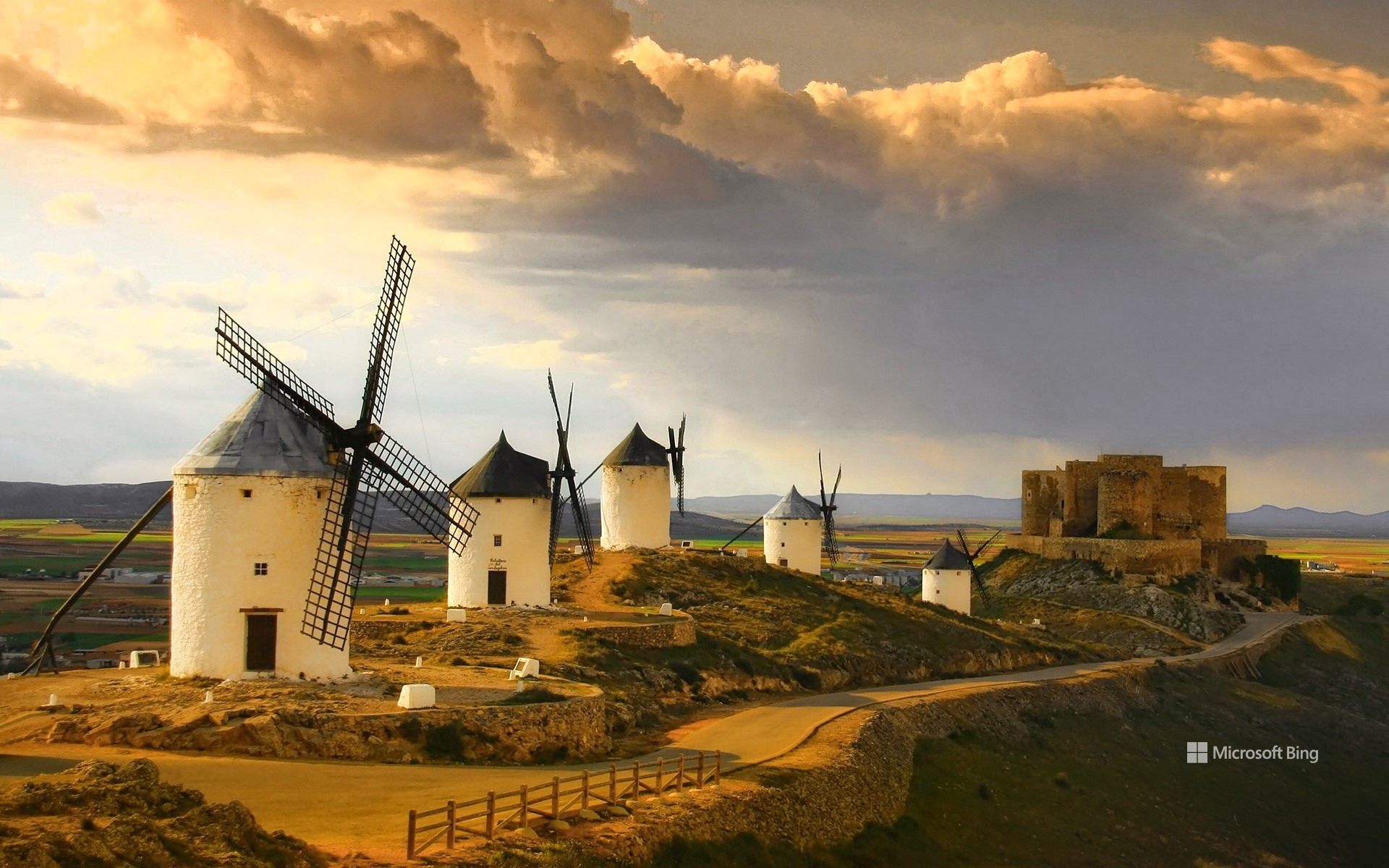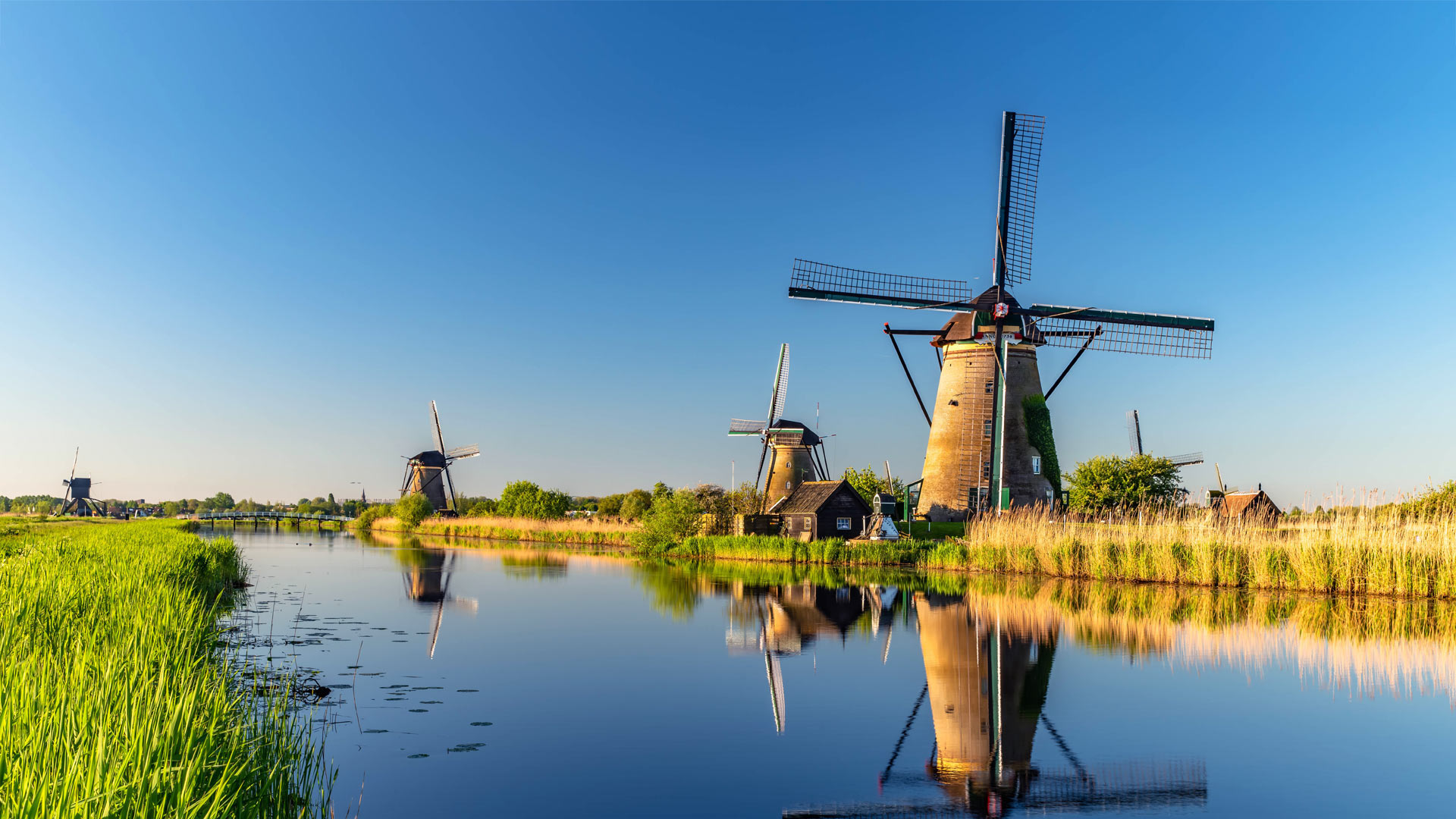标签 风车 下的文章
卡斯蒂利亚-拉曼恰的风车,西班牙 Windmills in Castilla-La Mancha, Spain (© Getty Images)

卡斯蒂利亚-拉曼恰的风车,西班牙 Windmills in Castilla-La Mancha, Spain (© Getty Images)
西班牙骑士的“劲敌” A Spanish knight's greatest foes
卡斯蒂利亚-拉曼恰, 西班牙
在孔苏埃格拉小镇上,到处都流传着堂吉诃德的冒险故事,他是塞万提斯笔下的英雄,是西班牙史诗小说《堂吉诃德》的主人公。这个位于卡斯蒂利亚-拉曼恰的旅游胜地因一座名为卡尔德里科的小山丘而出名。这座山丘顶部有12座白色风车,或许正是这些风车激发了塞万提斯的灵感。在小说中,塞万提斯将它们描绘成一支巨人军队。风车由石墙和木制叶片构成,其中一些风车的历史可追溯到16世纪,它们曾是碾磨谷物的工具,如今成为见证历史的活化石。
卡斯蒂利亚-拉曼恰是西班牙第三大区,仅次于卡斯蒂利亚-莱昂和安达卢西亚,但与其面积相比,这里的人口相对较少。该地区的首府托莱多拥有重要的建筑和文化遗产,包括古城和托莱多大教堂,1986年,托雷多被联合国教科文组织评为世界文化遗产。因此,如果你有出游计划,不妨去卡斯蒂利亚-拉曼恰,听一听古老风车的低语,感受塞万提斯笔下的自由与勇敢。
Castilla-La Mancha, Spain
In the Spanish town of Consuegra, echoes linger of the adventures of Don Quixote, the hero of Miguel de Cervantes' epic novel. This tourist destination in Castilla-La Mancha is famous for its rocky ridge, known as Cerro Calderico, crowned with 12 white windmills. The windmills are thought to have inspired Cervantes to write the famous scene in which Don Quixote mistakes them for an army of giants. With their stone walls and wooden blades, some date back to the 16th century, when they were built to grind grain.
Castilla-La Mancha is the third-largest region—after Castile y León and Andalusia—in Spain but one of the least densely populated. The regional capital city, Toledo, has a significant architectural and cultural legacy—including Old Town and the Catedral de Toledo—that led to its designation as a UNESCO World Heritage site in 1986. So, for your next quest, let the windmills of Castilla-La Mancha whisper their timeless tales in your ear.
金德代克风车群,荷兰 Windmills, Kinderdijk, Netherlands (© Achim Thomae/Getty Images)

金德代克风车群,荷兰 Windmills, Kinderdijk, Netherlands (© Achim Thomae/Getty Images)
可靠的移水器 Trusty water-shifters
Windmills in Kinderdijk, the Netherlands
This stretch of windmills is one of the best-known Dutch tourist sites—you probably recognize them from postcards and calendars. Both iconic and historic, the windmills in the village of Kinderdijk have been a UNESCO World Heritage Site since 1997. The Netherlands has about 1,200 windmills, though only 300 or so are still operational. Over the years they've played a major role in pumping sea water away from the nation's reclaimed land. Keeping the water at bay is a perennial issue for the flat 'low countries,' where much of the ground is below sea level.
The second Saturday in May—today!—is National Windmill Day in the Netherlands, when windmills all over the country open their doors to visitors, letting locals and tourists alike marvel over the simple yet highly effective inner workings. And of course, though wind is a force of nature that's been harnessed for centuries, it's having a resurgence, albeit in a more high-tech form. It's a leading producer of 'green' energy and is expected to grow dramatically in the coming years. So, on National Windmill Day, let's tip our hats to these sturdy ancestors while also cheering the pioneering work of the sleek, graceful new generation.
荷兰金德迪克的风车
这段风车是荷兰最著名的旅游景点之一,你可能从明信片和日历上就能认出它们。Kinderdijk村的风车既是标志性的也是历史性的,自1997年以来一直是联合国教科文组织的世界遗产。荷兰约有1200座风车,但仍在运营的只有300座左右。多年来,他们在将海水从国家填海区抽走方面发挥了重要作用。对于地势平坦的“低海拔国家”,保持海水不受影响是一个长期存在的问题,那里的大部分土地低于海平面。
今天是五月的第二个星期六-是荷兰的国家风车日,全国各地的风车向游客敞开大门,让当地人和游客都惊叹于简单但高效的内部工作。当然,尽管风是一种自然力,已经被利用了几个世纪,但它正在复兴,尽管是以更高科技的形式。它是“绿色”能源的主要生产商,预计未来几年将大幅增长。因此,在全国风车日,让我们向这些强壮的祖先致敬,同时也为时尚优雅的新一代的开拓工作欢呼。